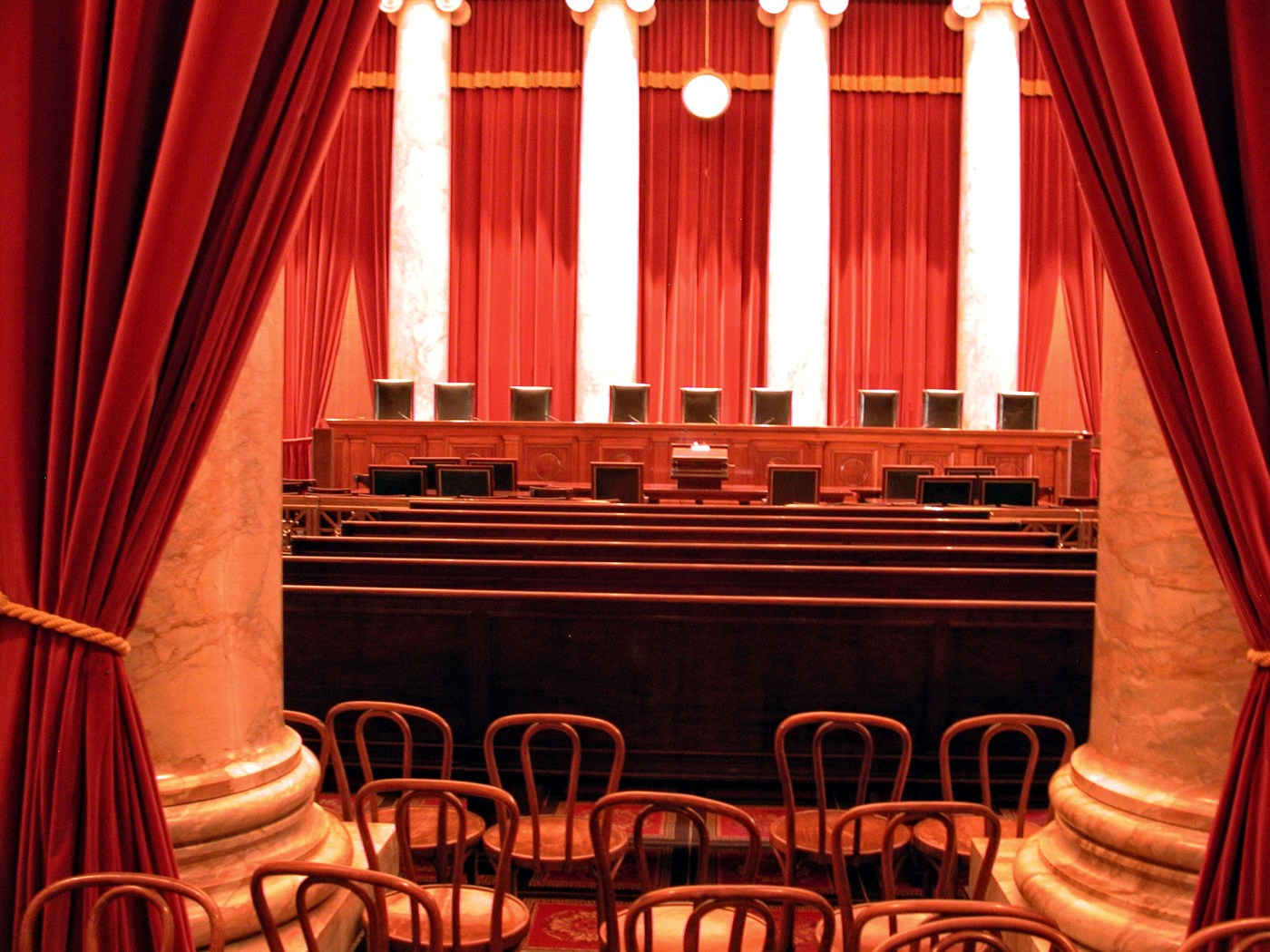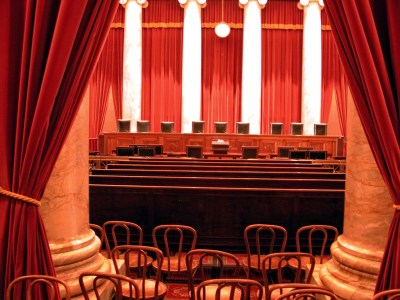Four decades ago in Chevron v. Natural Resources Defense Council, the Supreme Court directed lower courts to let administrative agencies take the lead in interpreting regulatory laws. Even if judges thought an alternative interpretation better suited the original meaning of a given piece of legislation, the landmark 1984 case held that courts should defer to the agency’s reasonable interpretation of a statute’s ambiguous language.
Loper Bright v. Raimondo, decided at the end of the recently concluded Supreme Court term, marked the end of all that. “Chevron is overruled,’’ the court held in a 6-3 majority opinion by Chief Justice Roberts. “Courts must exercise their independent judgment in deciding whether an agency has acted within its statutory authority.” No more deferring to an agency’s interpretation just because it is a “reasonable” one: “In the business of statutory interpretation, if it is not the best, it is not permissible.”
To observers not already immersed in the debates surrounding Chevron and Loper Bright, the court’s holding might seem commonsensical. Isn’t the court’s job, going all the way back to Marbury v. Madison, to interpret laws? Why, then, are some critics painting Loper Bright as an imperialistic judicial power grab that “gutted the power of federal agencies,” while some optimists see it as an opportunity to make the federal government less divisive, erratic, and brutal?
That courts need to independently interpret laws is indeed common sense—outside of modern administrative law (i.e., the body of law governing regulatory agencies’ procedures, fact-finding, policymaking, and legal interpretations). But within administrative law, Loper Bright is undoubtedly a significant development, even if it’s not the “earthquake” that some commentators have made it out to be.
Loper Bright marks the end of what one might call “administrative exceptionalism.” In most areas of law, judges are expected to offer an authoritative interpretation of ambiguous statutes without an easy explanation. But since Chevron—or arguably since even decades before—courts treated regulatory statutes differently. Under Chevron, judges have often treated statutory ambiguity as a reallocation of power. It meant that the EPA, OSHA, and other administrative agencies, not the courts, would determine the meaning of a law—and redetermine it later, differently, if a given agency changes its mind.
Dissenting in Loper Bright, Justice Kagan challenged the notion that judges could try to resolve a regulatory statute’s ambiguity without trespassing on the agency’s policymaking authority. Indeed, she rejected the premise that such ambiguities can be resolved with a court’s “best” interpretation. Her dissent echoes her quip at oral argument: “Sometimes law runs out.”
For the court, however, overturning Chevron simply brings an end to the agencies’ exemption from normal judicial review. After all, resolving statutes with textual ambiguities is simply the everyday work of the courts. As the majority opinion observes, courts “understand that such statutes, no matter how impenetrable, do— in fact, must—have a single, best meaning.”
“That is the whole point of having written statutes,” the majority opinion emphasizes: “Every statute’s meaning is fixed at the time of enactment.”
In that respect, the majority’s decision reflects not just a reassertion of judicial authority (as many of its critics lamented), but also a reacceptance of judicial responsibility.
But the court’s new approach reflects another concern. Under Chevron, agencies have often changed their interpretations of statutes, especially after a presidential election ushers a new administration into power. This was, in fact, one of the potential virtues of Chevron, as the late Justice Antonin Scalia and others noted from the start, allowing presidential elections to have policy consequences is a good thing.
But you can have too much of a good thing. And in recent years, the consequences of myriad legal flip-flops from one administration to the next proved untenable. Our modern era of presidential administration—with each election seeming like an outright regime change, with virtually every area of law subject to summary reversal through a flurry of post-inauguration executive orders and agency pronouncements—has come to resemble what Alexander Hamilton warned about in Federalist 72: the “disgraceful and ruinous mutability in the administration of the government.”
In renouncing Chevron and trying to limit the ruinous legal uncertainty that it exacerbated, the Roberts Court isn’t pretending that the problem of statutory ambiguity can simply be wished away. At the outset of his majority opinion, Roberts quotes James Madison’s own recognition that every written law will inevitably contain ambiguities—some more, some less.
But given this inherent problem of ambiguity, Roberts continued, the courts must work to mitigate the problem, not exacerbate it. “To ensure the ‘steady, upright and impartial administration of the laws,’ the Framers structured the Constitution to allow judges to exercise that judgment independent of influence from the political branches,” Roberts writes, quoting Hamilton’s Federalist 78.
Ironically, critics of the Roberts Court complain that Loper Bright will destabilize the law. Regulatory programs that agencies had once justified with “reasonable” interpretations of ambiguous statutes, they worry, might not pass muster under the courts’ newly undeferential interpretations of those laws. Furthermore, different courts will inevitably reach different conclusions in their search for the “best” interpretation of any given statute.
This surely will create some uncertainty. That said, Loper Bright’s critics tend to minimize or ignore the far greater uncertainty that Chevron fostered: the radical regulatory uncertainty that carried from one administration to the next. Furthermore, they also minimize or ignore the other factors that will stabilize the law.
First, lower-court disagreements over the interpretation of a law will be resolved by the Supreme Court, in its traditional work of resolving “circuit splits.” Regulatory cases are already becoming the Supreme Court docket’s center of gravity; post-Loper Bright, circuit splits will accelerate that trend.
Second, the courts’ interpretations of statutes—sometimes agreeing with agencies, sometimes disagreeing with them—will finally settle the matter from statute to statute. No longer will judicial review of an administration’s regulatory program simply mark time until the next administration’s interpretative about-face.
Third, and crucially, this settlement of interpretive questions will redirect political energy to where it actually belongs: Congress. Now lobbyists and activists seeking to change the law will have to change the actual laws through legislation. Critics who complain that Loper Bright will unleash a torrent of lobbying and litigation seem to forget that Chevron itself unleashed torrents of lobbying and litigation, both within agencies and the courts.
In this, Loper Bright’s biggest impact will not be felt in the judicial review of transformative, headline-grabbing new regulatory programs. The “major questions doctrine,” elaborated recently by the court in cases like West Virginia v. EPA (climate policy) and Biden v. Nebraska (student loan waivers) already constrains those. Rather, Loper Bright will be more important in smaller, but still significant, disputes of labor law, energy law, and other issues where agencies have consistently flip-flopped from one administration to the next.
But the agencies won’t be pushovers. To the extent that Loper Bright and the major questions doctrine make judicial review less appealing, the agencies will find ways to make policy outside the normal routes of agency action, in ways that are less susceptible to judicial review.
Indeed, that trend, too, is already well underway. Over the last decade, administrations have become much more creative—and much more ambitious—in making policy passive-aggressively. Agencies can leverage one regulatory power to exacerbate concessions from companies or industries on other matters. (Concede this issue, or you’ll never get that permit. Let this one go, or prepare for regulatory scrutiny on another front.) They can make massive new regulatory programs by waiving laws (e.g., the student loan laws), knowing that such programs are much harder to challenge in court. And administrations can try to accomplish more policy goals through agencies whose actions are traditionally least susceptible to judicial review—namely, the financial regulators.
Loper Bright will all but certainly speed up those trends. That said, it might just also accelerate a judicial reconsideration of at least some precedents that have insulated passive-aggressive administration from meaningful judicial review so far.
Of course, judicial review of agency action involves more than just the interpretation of statutes. An agency’s regulatory actions also involve fact-finding and discretionary policymaking. Agencies’ factual findings still receive a fairly deferential judicial review. So do agencies’ explanations justifying their policy choices, though the Roberts Court has become less deferential there, too, in cases against the Trump administration—on the census and on immigration—that produced far less academic anguish than Loper Bright.
The court’s new decision alludes to these other parts of administrative law, as shown by the following (abridged) passage:
When the best reading of a statute is that it delegates discretionary authority to an agency, the role of the reviewing court under the [Administrative Procedure Act] is, as always, to independently interpret the statute and effectuate the will of Congress subject to constitutional limits … by recognizing constitutional delegations, fixing the boundaries of the delegated authority … and ensuring the agency has engaged in reasoned decisionmaking within those boundaries.
It’s an important caveat, but also a fascinating one, because it papers over one of the biggest possible disagreements among the majority’s justices on one of the other big issues in modern administrative law: whether Congress violates the Constitution by writing statutes so broadly that it effectively delegates “legislative powers” to agencies. Justices Thomas, Gorsuch, and Kavanaugh have each voiced strong concerns over this issue; Roberts and Alito too, though less starkly. In the long quote above, when the court refers to agencies’ “constitutional delegations,” constitutional is doing a lot of work.
Perhaps that will be another long-term consequence of Loper Bright: an acceleration of the “nondelegation” debates. The more that justices and judges have to grapple with the last century’s laws empowering agencies in practically open-ended terms, the more that judges will interrogate those statutes for “best” meanings only to come up either deeply divided or empty-handed. And the more that they come up empty-handed, the more that judges may conclude that at least some federal statutes simply have no real meaning at all, other than to empower regulators to write our laws in the first instance.
For those statutes, Justice Kagan saw a solution in Chevron deference: courts should let the agencies write the statute’s substance. Her conservative colleagues, by contrast, might see the solution in a nondelegation doctrine that declares the statute unconstitutional. “Sometimes law runs out” was a memorable line in defense of Chevron; it would be even more memorable in defense of a new nondelegation doctrine.






Please note that we at The Dispatch hold ourselves, our work, and our commenters to a higher standard than other places on the internet. We welcome comments that foster genuine debate or discussion—including comments critical of us or our work—but responses that include ad hominem attacks on fellow Dispatch members or are intended to stoke fear and anger may be moderated.
With your membership, you only have the ability to comment on The Morning Dispatch articles. Consider upgrading to join the conversation everywhere.